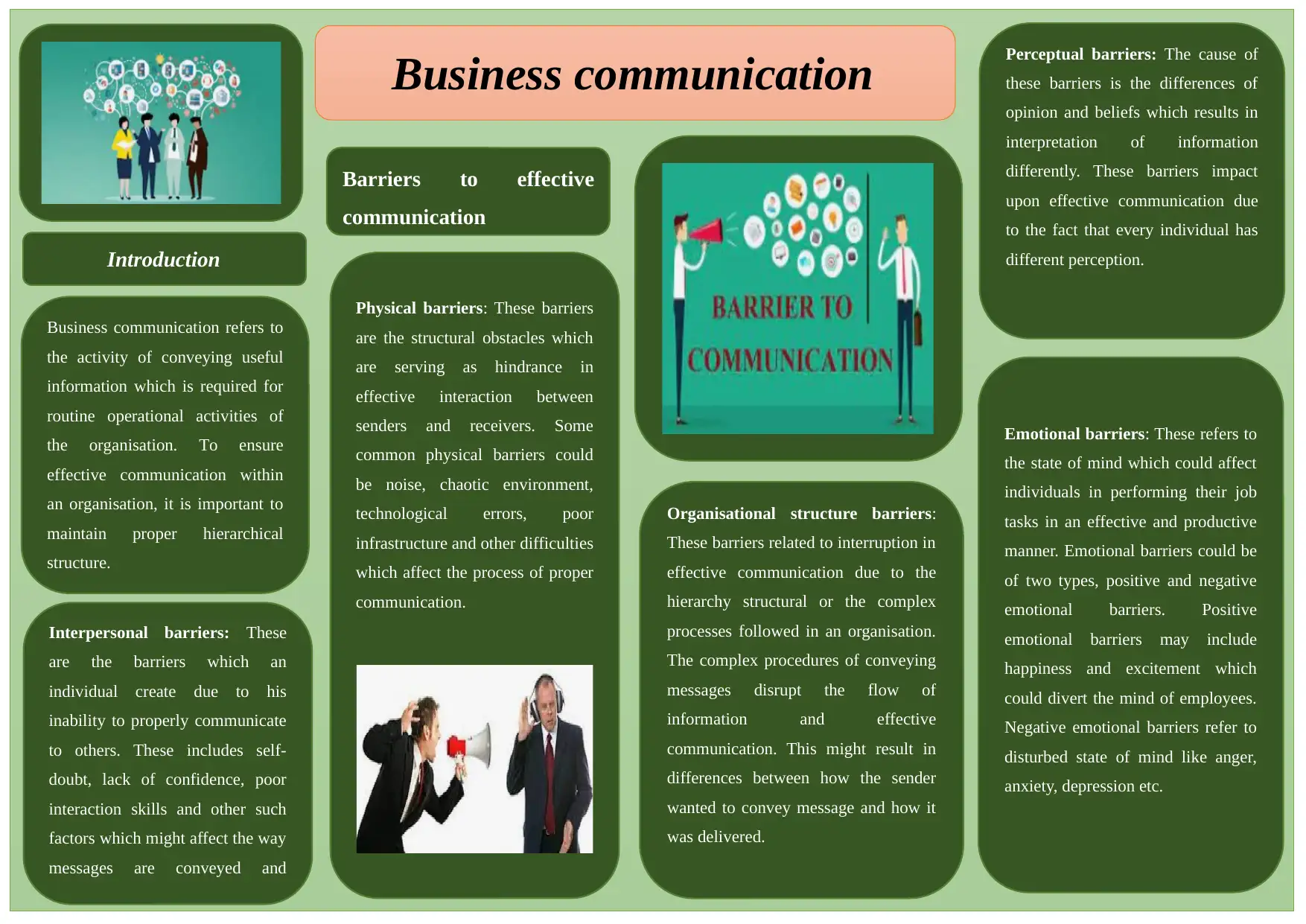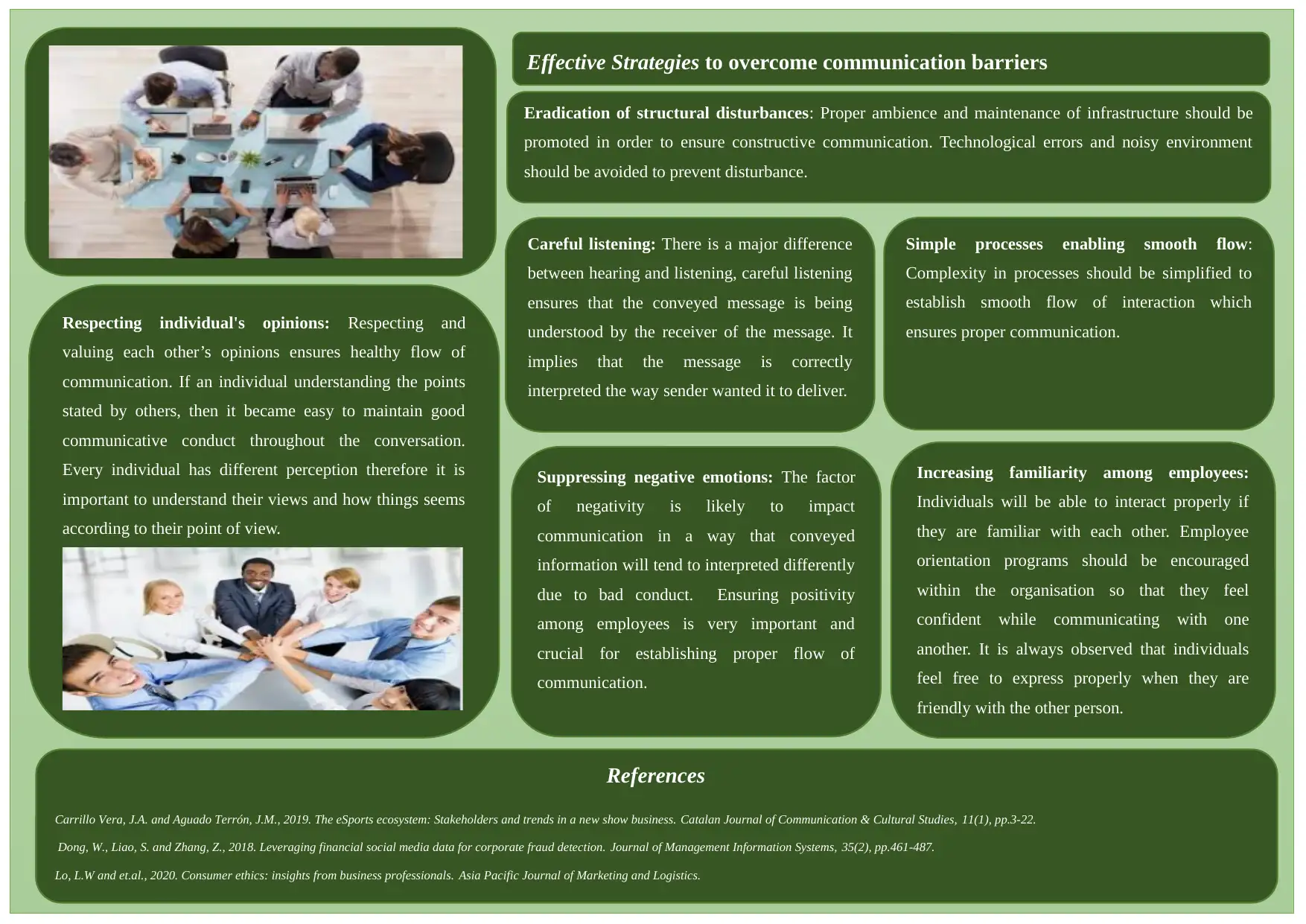Analyzing Communication Barriers & Strategies for Business Improvement
VerifiedAdded on 2023/06/14
|2
|696
|259
Essay
AI Summary
This essay explores various barriers to effective business communication, including perceptual, physical, emotional, interpersonal, and organizational structure barriers. Perceptual barriers arise from differences in opinions and beliefs, leading to varied interpretations. Physical barriers are structural obstacles such as noise and poor infrastructure. Emotional barriers encompass both positive and negative states of mind, like excitement or anxiety, that disrupt communication. Interpersonal barriers involve difficulties in conveying information effectively, while organizational structure barriers relate to complex hierarchies and procedures. The essay then outlines strategies to overcome these barriers, such as eradicating structural disturbances, respecting individual opinions, practicing careful listening, simplifying complex processes, suppressing negative emotions, and increasing familiarity among employees. By implementing these strategies, organizations can foster a healthy flow of communication, improve interaction, and ensure messages are correctly interpreted, ultimately enhancing overall business performance. The document is contributed by a student and available on Desklib, a platform providing study tools for students.
1 out of 2







![[object Object]](/_next/static/media/star-bottom.7253800d.svg)